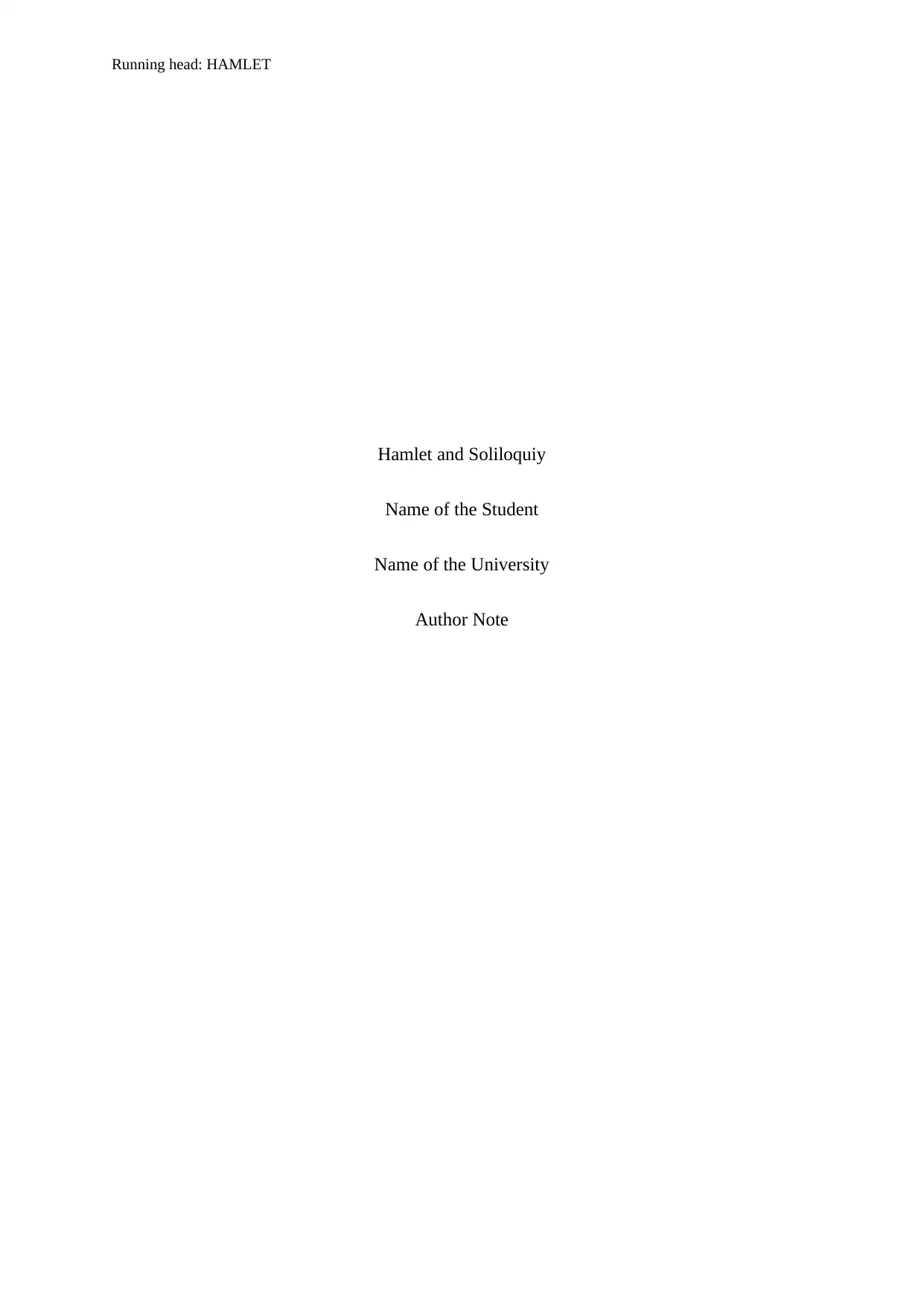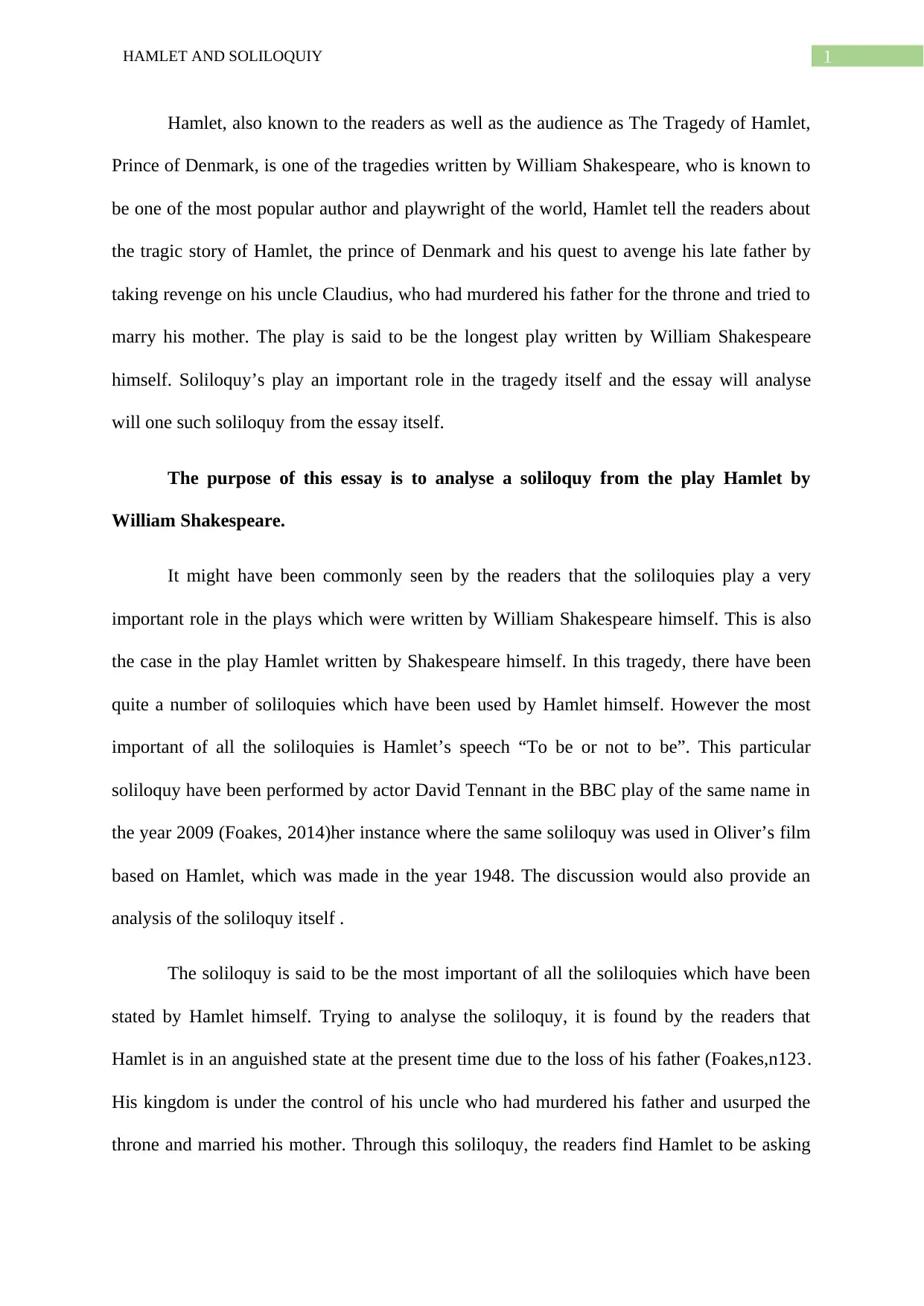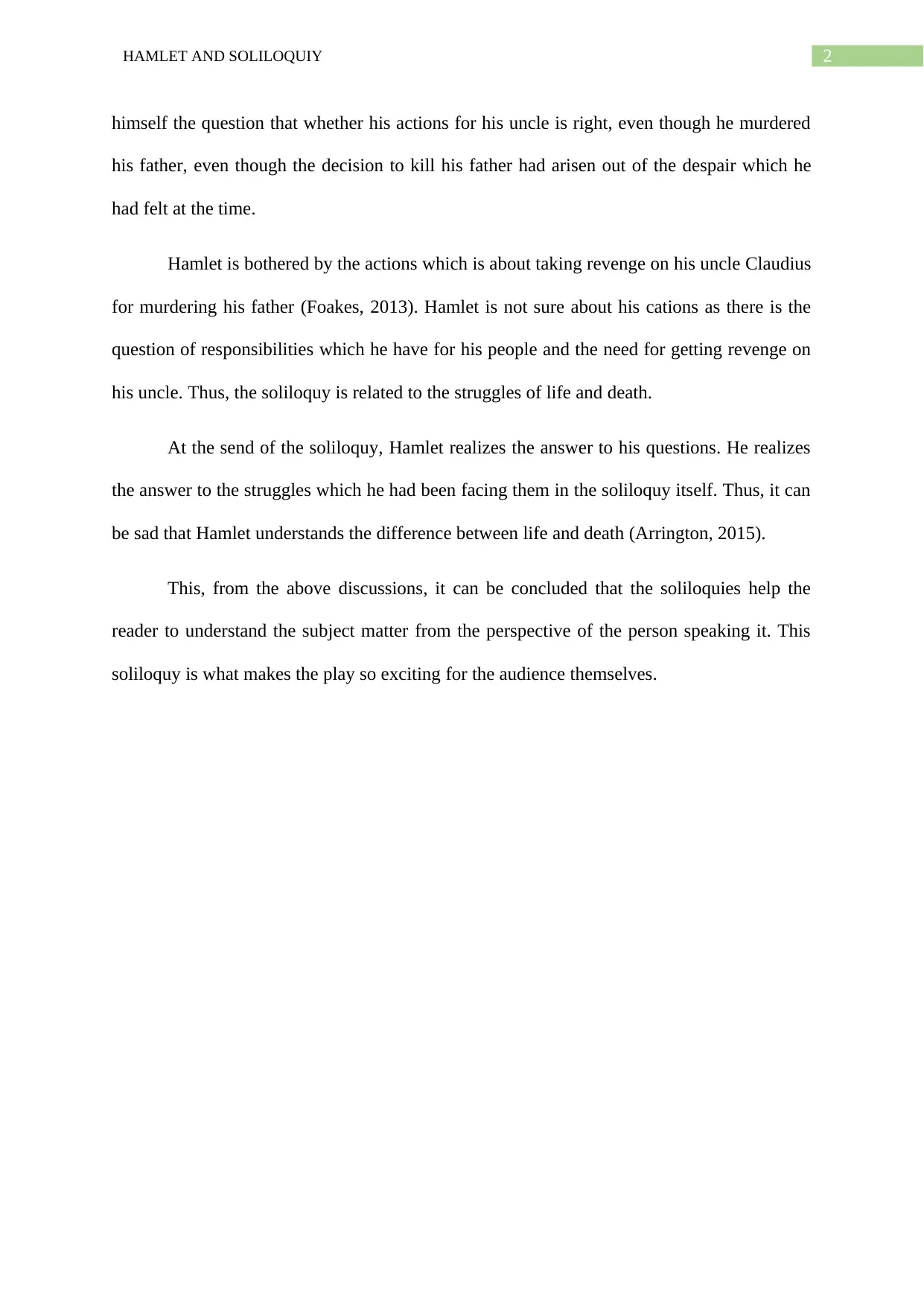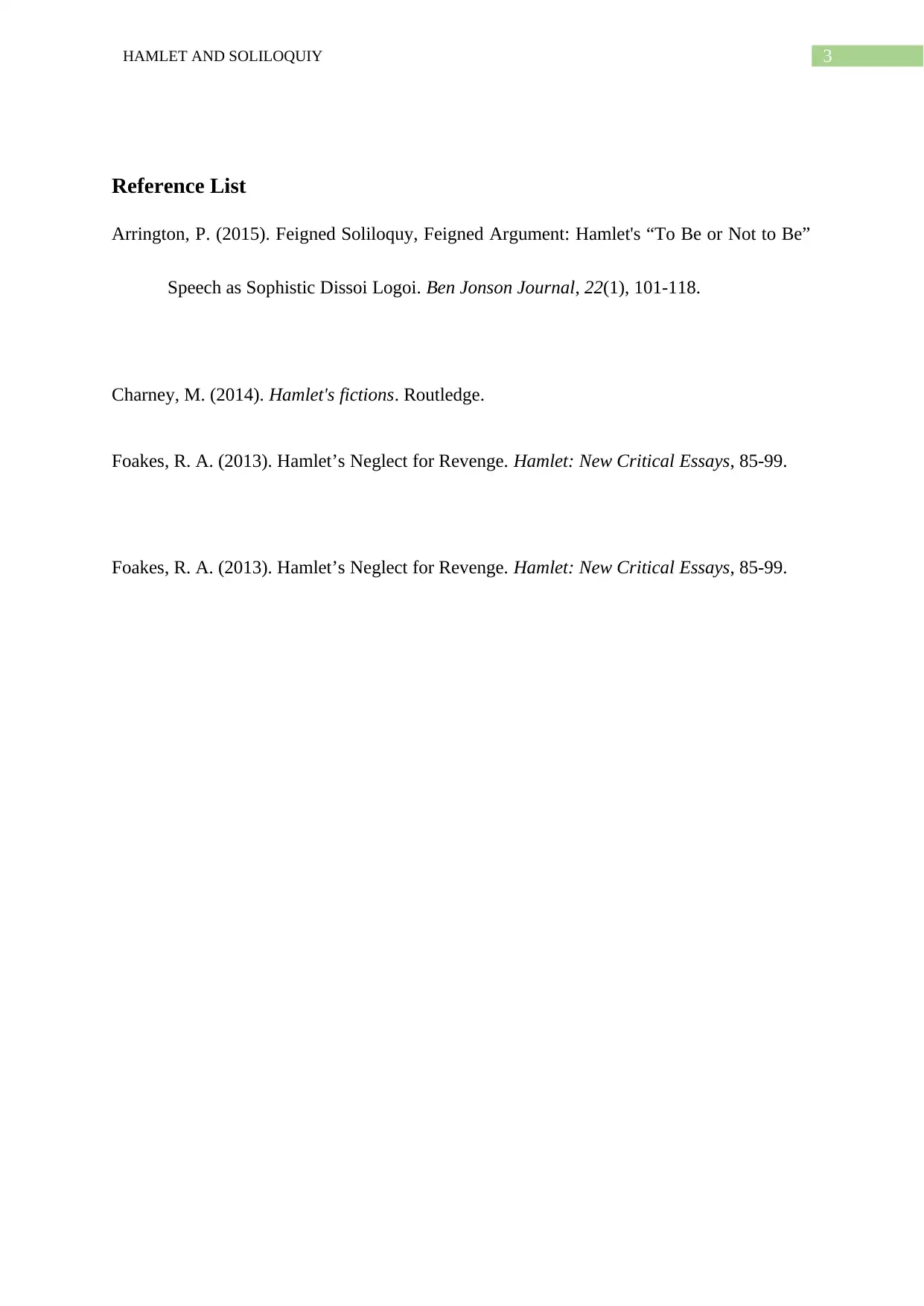Hamlet's 'To Be or Not to Be': A Soliloquy Analysis and Interpretation
VerifiedAdded on 2022/12/12
|5
|729
|182
Essay
AI Summary
This essay provides an analysis of Hamlet's soliloquy 'To be or not to be' from Shakespeare's play, focusing on its significance within the context of the tragedy. The essay explores Hamlet's internal conflict, his contemplation of life and death, and his struggle with the decision to seek revenge for his father's murder. The analysis delves into the key questions posed by the soliloquy, examining Hamlet's state of mind and the philosophical implications of his words. The essay examines the soliloquy's role in revealing Hamlet's character, as well as how different performances of the soliloquy bring out various aspects of Hamlet's character. By drawing on both the text of the play and various performances, the essay aims to provide a comprehensive understanding of the soliloquy's enduring power and relevance.
1 out of 5












![[object Object]](/_next/static/media/star-bottom.7253800d.svg)